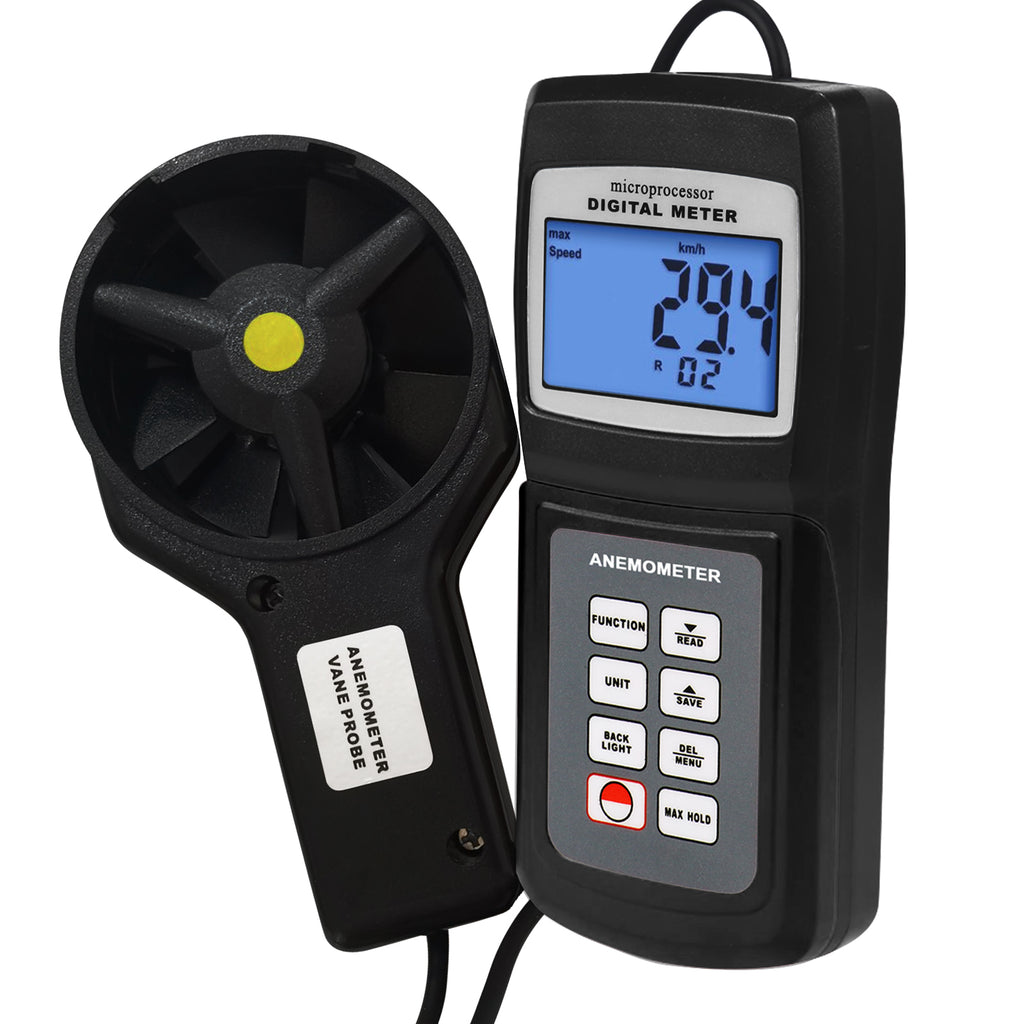Picking the Right Anemometer: A Comprehensive Purchasing Guide
Picking the Right Anemometer: A Comprehensive Purchasing Guide
Blog Article
All You Required to Find Out About Anemometers: Just How They Work, Why They Matter, and Where to Utilize Them
Anemometers, however commonly overlooked in the realm of scientific tools, play an important role in different areas, offering valuable understandings right into wind speed and airflow patterns. Understanding the mechanics behind these devices is important for anybody seeking to harness the power of this data. From meteorologists tracking weather patterns to designers designing frameworks with wind lots in mind, the applications of anemometers are diverse and far-ranging. As we explore the complexities of anemometer modern technology, we will discover the inner operations of these devices, their relevance, and the key factors to consider when picking the right anemometer for certain applications.

Anemometer Essentials
A crucial instrument used to gauge wind speed and instructions, the anemometer plays an essential duty in weather forecasting and different sectors. An anemometer typically consists of 3 or four mugs that revolve in the wind, a vane that directs into the wind, and sensors to track the rotations or motions.
There are different types of anemometers readily available, consisting of mug anemometers, vane anemometers, hot-wire anemometers, and sonic anemometers, each with its unique features and applications. Mug anemometers are frequently made use of for standard wind rate dimensions, while vane anemometers are favored for directional dimensions.
Concepts of Anemometer Procedure
Building on the foundational understanding of anemometer essentials, the principles of anemometer procedure illuminate the technicians behind wind speed and direction dimensions. Mug anemometers, for instance, have 3 or more cups that record the wind, causing them to spin much faster as the wind rate rises. Hot-wire anemometers depend on a heated cable that cools down as wind passes over it, with the rate of cooling determining the wind rate.
Relevance of Anemometers
Anemometers play a vital function in measuring wind speed and direction, offering crucial information for weather projecting, climate research studies, environmental surveillance, and air travel operations. Meteorologists depend on anemometers to gather precise wind Related Site information, assisting them understand climate patterns, forecast storms, and problem timely warnings to the public. Wind ranch operators use anemometers to assess wind conditions and make the most of power production from wind turbines.
Applications Across Various Industries
In the eco-friendly energy sector, anemometers play a crucial role in examining wind problems for wind farm placements, making certain optimal energy production. Industries like building and mining utilize anemometers to keep an eye on wind rates, critical for security methods, particularly when working at elevations or in open-pit mines where solid winds can posture hazards. In farming, anemometers help farmers in taking care of plant splashing by giving real-time data on wind speed to avoid drift.

Selecting the Right Anemometer for Your Requirements
For basic objectives, a mug anemometer is suitable for gauging wind rate, while a vane anemometer provides wind instructions data. Hot-wire anemometers are ideal for reduced airspeed measurements, and ultrasonic anemometers provide high precision and toughness.

Final Thought
In conclusion, anemometers play a vital function in gauging wind speed and instructions throughout numerous markets. Comprehending the concepts of anemometer procedure is crucial for choosing published here the ideal tool for details needs. From weather forecasting to aviation, anemometers are important devices for collecting exact data and guaranteeing security in different applications. It is very important to think about the relevance of anemometers in order to make educated decisions when picking the most suitable gadget for gauging wind problems.
There are various types of anemometers offered, consisting of cup anemometers, vane anemometers, hot-wire anemometers, and sonic anemometers, each with its special attributes and applications. Cup anemometers are typically used for basic wind rate measurements, while vane anemometers are favored for directional special info measurements. Hot-wire anemometers are suitable for reduced airspeeds, and sonic anemometers are excellent for high-precision dimensions in research study and industrial setups.Building on the foundational understanding of anemometer fundamentals, the principles of anemometer procedure elucidate the mechanics behind wind rate and direction measurements. For basic functions, a mug anemometer is suitable for measuring wind rate, while a vane anemometer offers wind instructions data.
Report this page